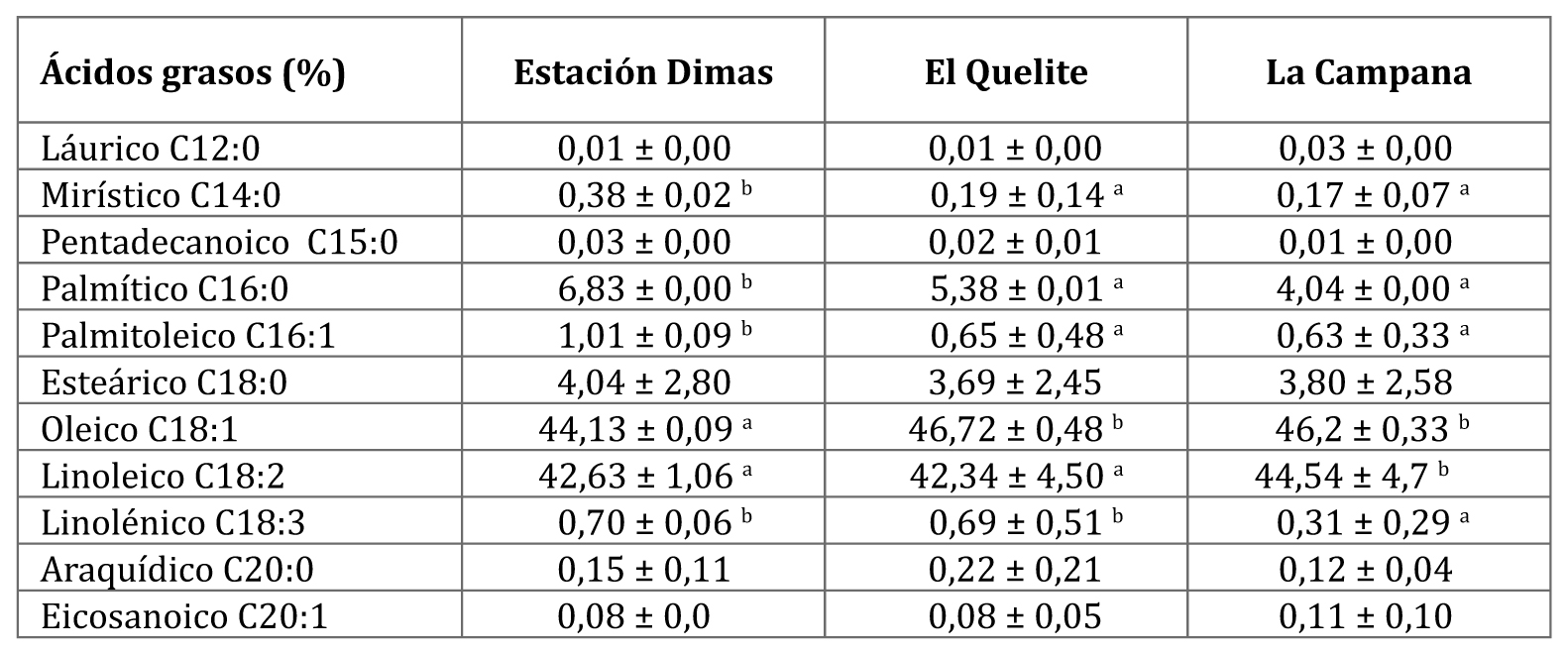Physicochemical properties of oil seeds of Jatropha curcas from wild populations, in Mexico
Keywords:
fatty acid, biodiesel, ecotype, physicochemical analysis, JatrophaAbstract
The need for studying sources of renewable energy is important starting from potential oleaginous plants. Jatropha curcas seed is characterized by its high oil content. In Mexico studies are focused on evaluating the physicochemical properties of J. curcas oil in wild plants cultivated in the southern region. The objective of this study was to evaluate these properties in three ecotypes of wild J. curcas of Sinaloa and their oil application in biodiesel production. The oil content of the germ was found to be 52 to 56%. Viscosity, density, acidity index, peroxide, iodine, and refraction showed no significant differences in the seeds collected from the three ecotypes in our study. The most abundant saturated fatty acids were palmitic (4 to 6%) and stearic (3 to 4%). The most abundant unsaturated fatty acids were oleic (44 to 46%) and linoleic (42 to 44%). Physicochemical characteristics of J. curcas oil of Sinaloa specimens are similar to those of southern Mexico and other countries, which suggest that the germplasm of the northwestern part of the country could be considered for conservation, rational utilization, and biodiesel production.
Downloads

Downloads
Published
How to Cite
Issue
Section
License
Aquellos autores/as que tengan publicaciones con esta revista, aceptan las Políticas Editoriales.










.jpg)




